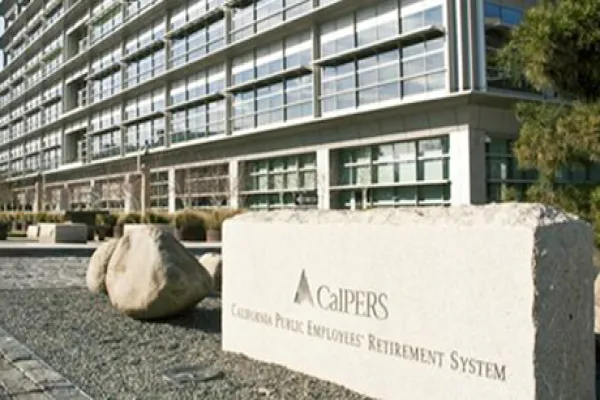Most people who leave elite university endowments, such as the David Swensen–led Yale Investments Office, go on to work for other asset owners. People who leave Harvard Management Company tend to become fund managers.
The storied endowment office has spawned a number of hedge fund operators — some with backing from HMC — and a handful of these so-called Crimson Cubs have gone on to become some of the largest and best-known firms in the business. Soon many more will attempt to join their ranks: HMC told employees in January that half of its 230-person staff will be let go under an overhaul being orchestrated by newly minted leader Narv Narvekar. HMC, which has historically managed the bulk of its assets in-house, will now be outsourcing much of the portfolio management. Many of these internal managers already have launches in the works. But launching may be a gamble, as performance for the Crimson Cubs has been decidedly mixed.
The best known of the bunch, Convexity Capital Management, was founded in 2005 by former HMC president and CEO Jack Meyer, along with his HMC colleagues David Mittelman and Maurice Samuels. Its $6.3 billion debut marked the largest hedge fund launch in history at the time, a haul that included $500 million from Harvard. The endowment had good reason to want to get in on the ground floor: During his tenure from 1990 to 2005, Meyer produced average annualized returns of 16.1 percent.
He has not replicated that success at Convexity in recent years. The firm closed its main fund to new investment in 2013 after its performance had floundered for 18 months. According to a 2015 Wall Street Journal report, the firm’s main hedge fund trailed the benchmarks by 2.4 percentage points in 2014, 3.7 percentage points in 2013, and 0.3 percentage points in 2012 — and it only collects incentive fees when it beats the benchmarks. They sank further in 2016 after the firm lagged the benchmarks in the first half by 3.6 percentage points, according to a Bloomberg report. The firm, which employs a fixed-income-focused strategy, managed $4.3 billion at the end of 2016, a far cry from its 2013 peak of $15 billion. Convexity declined to comment.
Highfields Capital Management has had a better time of it. The firm was founded in 1998 by Jonathon Jacobson, who managed equities for HMC, with $1.5 billion in capital. At the end of 2016 it managed some $12 billion in value-focused, opportunistic equity hedge funds that maintain a long bias, often holding positions for years. The firm’s flagship hedge fund has produced a cumulative return of approximately 560 percent since its launch in 1998, compared with a gain of about 234 percent for the HFRI Fund Weighted Composite Index. Highfields declined to comment for this story.
Like Convexity, Adage Capital Management has kept a low profile. But the similarities end there. The equity-focused firm, founded in 2001 by Robert Atchinson and Phillip Gross, manages approximately $29 billion. It has remained extremely popular with investors partly because of its uniquely generous terms: The managers only charge performance fees if their long-short equity funds outperform the S&P 500 index, and pay back a chunk of fees if they fail to beat that benchmark the following year. Performance has also helped: Through September 2015 its main hedge fund earned an annualized return of about 9.7 percent, beating the 6.4 percent return of the S&P 500 over the same period, according to a Wall Street Journal report. But it returned just 1.1 percent for the 12 months ending in June, according to a Bloomberg report, the first time it trailed the S&P 500 over a fiscal year since its inception. A spokesman for Adage declined to comment.
Several HMC portfolio managers are already planning fund launches, some with Harvard backing. One such fund is a relative value fund run by Michele Toscani and Graig Fantuzzi, which is expected to launch with at least $300 million from the endowment. (Fantuzzi has been a managing director of fixed income for the endowment; Toscani, a managing director, portfolio manager, and co-head of relative value strategy.) HMC is also planning to back Rene Canezin, HMC’s head of public markets and resources, with at least $300 million.
Other forthcoming launches include Sierra Brook Capital, a long-short fund to be run by Robert Howard and Sid Sandilya that will employ “a generalist, low-net, long-short equity strategy with an integrated fundamental and multifactor quantitative investment process,” according to Sandilya’s LinkedIn bio. Another is a yet-to-be-named emerging-markets equity fund run by Sanjiv Bhatia, according to a Bloomberg report. A spokeswoman for HMC declined to comment on the launches.
HMC’s fixed income team is highly regarded, and some say as many as six launches could come out of this group alone. But others may choose to skip the startup route altogether.
“There’s going to be competition for the better of the Harvard spinouts among platforms: Millennium, Point72, Citadel,” notes Adam Geiger, president and CIO of New Legacy Group, an investment advisory firm that specializes in emerging managers. “It will be interesting to see how many choose a truly independent path rather than go the platform route.”






